In the preceding blog, we discussed how impactful Graphics can be in Interiors. Here I would like to continue with the same topic ‘Graphics’ however, take a big step back and jump with you into a ‘Historical Journey of Graphics in Interiors’, full of facts yet not boring!
Having information about the roots and evolution of graphics provides contemporary designers the power to inspire and develop innovative ideas. I know the word ‘history’ makes you want to doze off, but I’ll try my level best to keep you high on information.
The existence of graphics has been traced from times immemorial. The origin of the visual communication stretches back to the caveman. Although these designed pieces are far from what we think of as graphic design today, they helped spark the concept of placing images on surfaces, leading us towards the path involving drawings, posters, banners & more. So join us as we discover the roots of graphic design from the prehistoric era into the industry we know of today.
We shall be going through four sections, covering the dividing eras in the saga of graphics in interiors.
It’s the period that commences with the appearance of the human being about five million years ago, and concludes with the invention of writing, about 6,000 years ago. Let’s start by discovering the Cave Paintings. These images are usually painted on cave walls and ceilings. They are the first pictograph that humans used to visually interact. We can see that the most common themes in these paintings are of large wild animals and cavemen's everyday activities. It is very clear that people at that time just painted their experiences; imaginative skills cannot be seen in these paintings. And one clear thing is, right from the start, humanity displayed a knack for communicating with visuals. Later, cavemen started focusing on details rather than making abstracts.
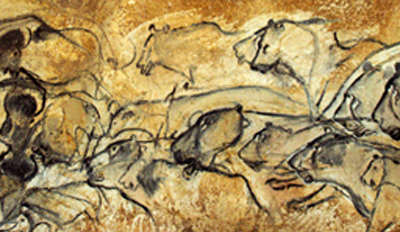

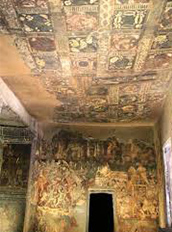
Paintings of animal figures on the rock walls of the Chauvet Cave; Bhim Betka; Ajanta Ellora paintings on walls & ceiling
After 25,000 years we can trace Petroglyphs. They are images created by removing part of a rock surface by incising, picking, carving, or abrading, as a form of rock art. These are powerful cultural symbols that reflect the complex societies and religions of the surrounding tribes. Some petroglyphs have meanings that are only known to the individuals who made them. The meanings of these graphics are so mysterious that one can only guess what it could truly mean!
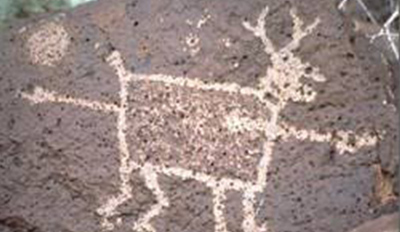
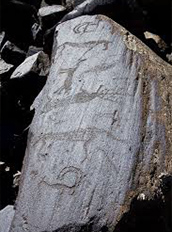
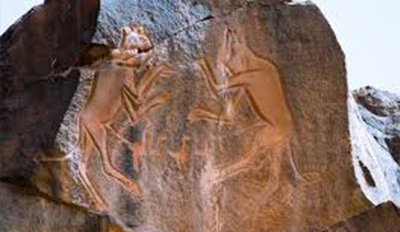
Petroglyph of a deer or pronghorn pierced by a spear; Petroglyphs at Ughtasar, Armenia; Rock carving known as Meerkatze
Around 600-200 BCE large designs or motifs produced on the ground and typically formed by rocks or similarly durable elements of the landscape, these were known as Geoglyphs. Using Biometric surveying techniques, experts marked up the space with wooden poles and workers cleared stones creating designs. They were created to be seen by the Gods and Deities, believed to be in the sky. So this way they were using Graphics to 'Communicate'.
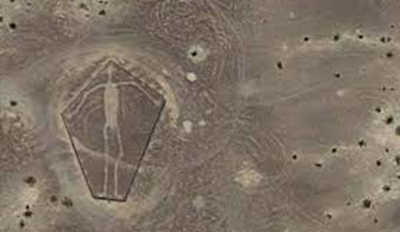
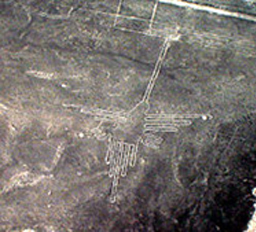
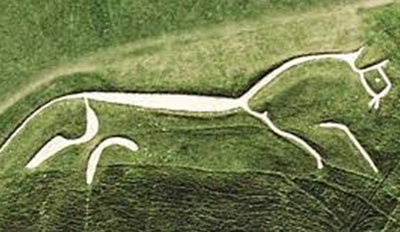
From the left: Blythe Geoglyphs, California; The Uffington White Horse; The Nazca Lines in Peru
The first pure alphabets emerged around 2000 BCE in ancient Egypt as a representation of language development by Semitic workers in Egypt. Additional development in the Greek alphabet is the source for all the modern scripts of Europe. Then the Romans used the Greek alphabets as the basis for the uppercase alphabet that we know today.
Alphabets are still used in various forms in interior graphics today as spoken about in the previous blog’s section where ‘Graphics that give a message, inspire others, inform & educate others’ all use text.
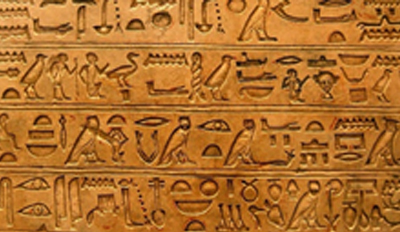
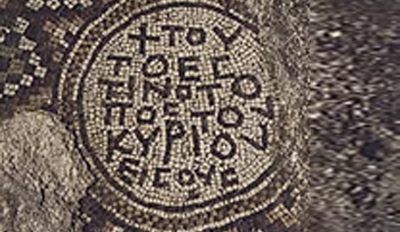
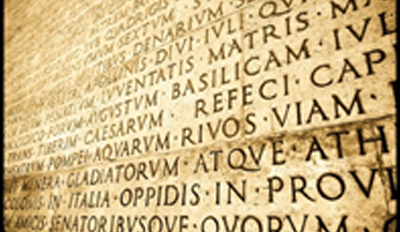
The above images show the order wise alphabetical development: Egyptian, Greek and Roman alphatets
Between 3200 BCE-400 AD Egyptian hieroglyphs were used as a writing system by the ancient Egyptians. It contained a combination of logographic, alphabetic and ideological elements. It emerged from the preliterate artistic cultures of Egypt. The Egyptian spirituality and livelihood can be observed through these. It can be comprehended that hieroglyphs were extensively used in interiors as well as the exteriors of the buildings then.
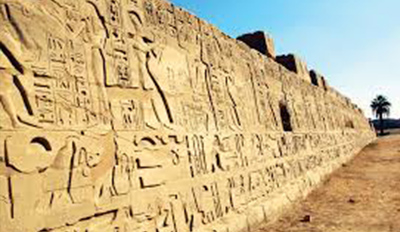
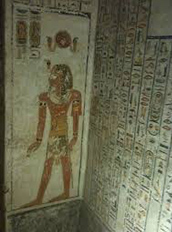
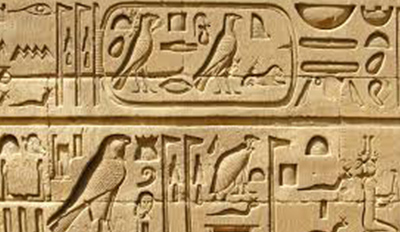
Hieroglyphics on a temple wall at Karnak ; Tomb in King’s valley; the temple at ancient Ombos.
The invention of paper in 105AD by a Chinese man led to the concept of printing. Nearly a millennium later in 1045AD movable type was invented which allowed characters to be placed individually. It was later used for printing landscapes and other daily life activities, along with interiors for aesthetic and functional purposes.
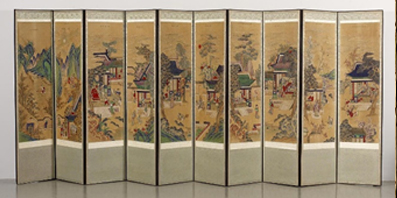
Panel folding screen having sceneries painted were used in households in China
The period between 1300-1600AD saw a revival, or “rebirth,” of Classical learning from ancient Greece and Rome throughout Europe. Buildings were renovated with extensive use of graphics on interiors, walls, ceiling and floors.
One of the primary examples of this time can be seen in Sistine Chapel. Its fame rests mainly in the frescos that decorate the interior. Fresco painting is ideal for making murals because it lends itself to a monumental style, is durable, and has a matte surface. The images below can help one understand how fantastically graphics and colours impact a space.
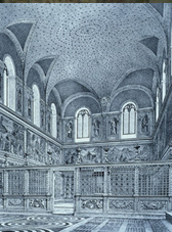

Sistine Chapel before & after the Fresco painting
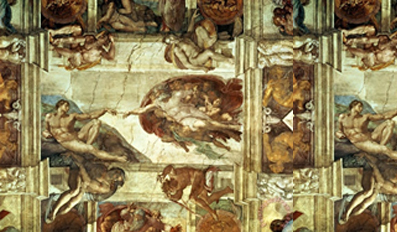
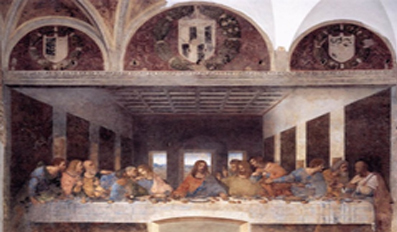
‘The creation of Adam’ forming part of the Sistine Chapel ceiling & ‘The Last Supper’ in Convent of Santa Maria delle Grazie by Michelangelo
When Renaissance was taking place in Europe, Taj Mahal was being built in India. It is one of the Seven Wonders of the World. 26 chapters of the holy Quran are inscribed on the marble surface of the structure! The stone used for the black Arabic script is onyx. Precious stones and gems were inlaid to form ornamental foliage and flowers. The pictorial and textual graphics amplify the monument’s beauty. Paintings of live forms are prohibited in Islam and this was the main reason Islamic architecture relied on such kind of structural beautification.
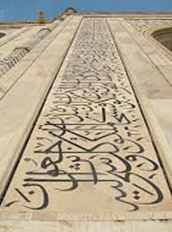
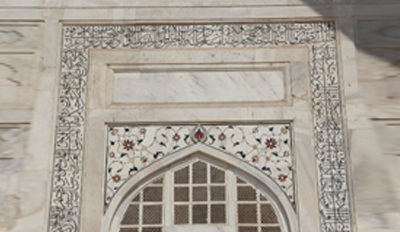
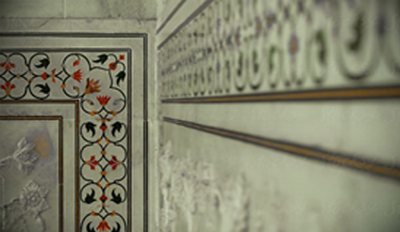
The highlight to the inlaid scheme is provided by what is described by the Mughal historians as “Parchin Kari”
The invention of the Gutenberg press in 1439 paved the way for more commercial uses of design. With the advent of the printing press in Europe, humanity was able to recreate text, art and design on a massive scale, and for a relatively much cheaper price.
The earliest scheme of Stained Glass windows was created during the Renaissance and it evolved during the 18th century. The purpose of it is not to allow those within a building to see the world outside or even primarily to admit light but rather to control it. For this reason, it has been described as "illuminated wall decorations". Natural light passes through multiple colours, filters through and illuminates the entire space creating a vibrant environment. Doesn’t the image below (right corner) give an effect of Kaleidoscope?
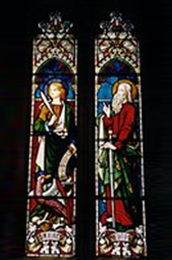
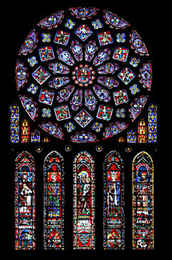
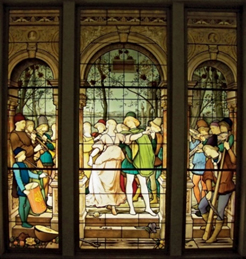
St. Andrew's Cathedral, Sydney; St Mary's, Chilham; La Danse des Fiançailles,France; Chartres Cathedral, France
The Industrial Revolution, which sparked in the late 1700s, brought with it, new technologies for increasing the efficiency and production of manufacturing processes—including design. Graphical changes along these movements can be observed in this section.
Designs using straight lines, rectilinear forms, and a restrained geometric ornamentation, minimal use of colour, simplicity of form and of course, an adherence to classical values and techniques could be seen in Neoclassical Era.
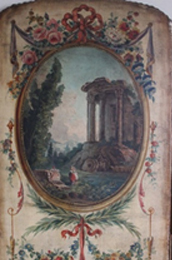
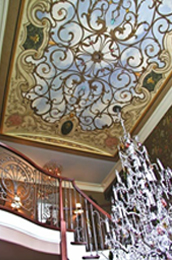
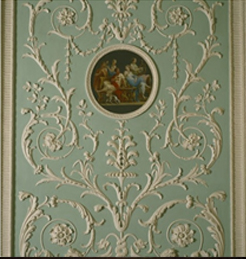
Wall paitings, decorative elments and ceiling design
A global design movement that heavily influenced architecture, fashion, and graphic design in the late 19th century Art Nouveau of 1890. Much of the “New Art” movement involved organic vine-like lines, elegant curves, and ornate typography. It was significant because it encouraged artists to convey their art though forms of expression, movement, and abstract representation.
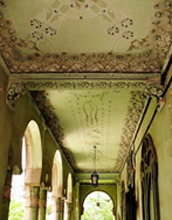
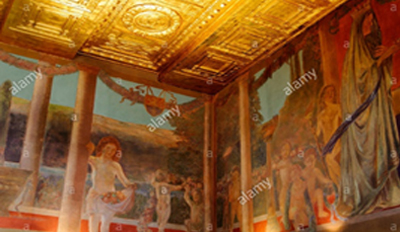
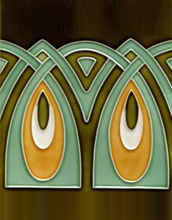
Ceiling design; Wall paiting and, tile of Art Nouveu era
An artistic and architectural movement in Russia from 1914 onwards, Constructivism, a term often used in the modern era which dismissed "pure" art in favour of art used as an instrument for social purposes, namely, the construction of socialist society. It had a great effect on modern art movements of the 20th century, influencing major trends such as the Bauhaus and De Stijl movements. The movement rejected decorative stylization in favour of the industrial assemblage of materials. Strong and bold messages of simplicity were conveyed through this form of art.
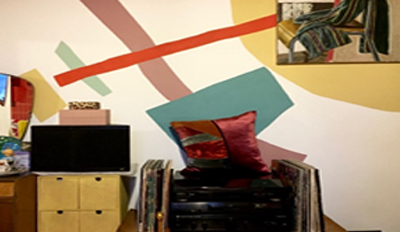
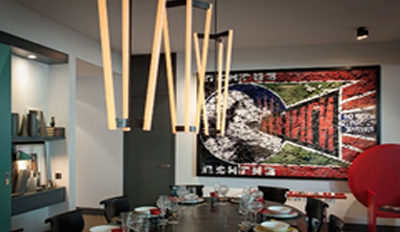
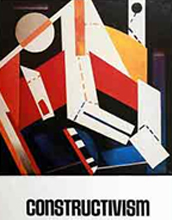
Posters of the era; graphics used on walls in contemporary times
The movement which celebrated war, violence, speed, advanced technology and urban modernity, Futurism, came to fame in between 1909-1920. Committed to the new ideology, its members wanted to destroy older forms of culture and to demonstrate the beauty of modern life, machines, and change. A lot of paintings and posters made in this era were portrayed in interiors.
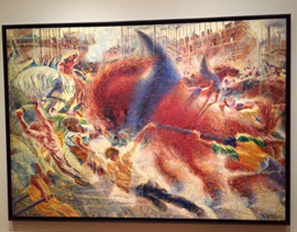
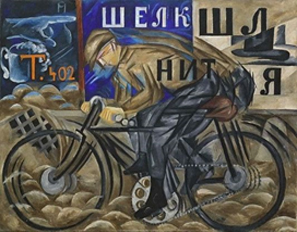
Painting of Umberto Boccioni; Italian futuristic graphic
Around the 1910s-1940s Modernism was adopted deliberately to reject artistic styles of the past, emphasizing experimentation with new materials and techniques instead. Modernist graphic design aimed to create artwork that reflects the nature of modern society. Bold colours, simple shapes, and modern fonts are all common elements. The designers and artists wanted to unshackle themselves from all the prevailing form of ornamentation in art and design.
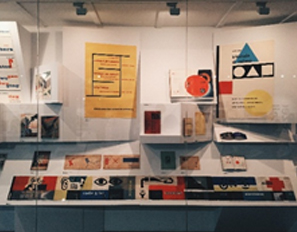
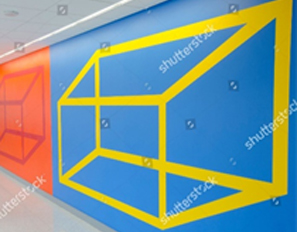
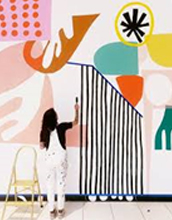
Posters of the era; graphics used on walls in contemporary times
After about ten years into modernism, Bauhaus, an art and architecture school in Germany founded by Walter Gropius launched a new way of thinking. It incorporated minimalism, geometric shapes, and simplistic, new typefaces.
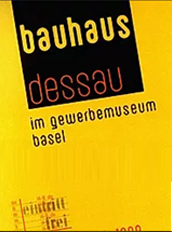
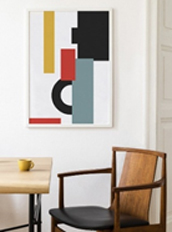
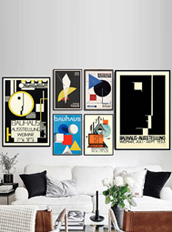
Posters of the era; graphics used on walls in contemporary times
For many, Art Deco was a spinoff of modernism and a way for graphic designers to show the luxury and beauty of simple shapes and typography. This art form is lavish and authentic, with plenty of geometric shapes, contrasting colours, and symmetrical patterns. The idea was to create a sleek sense of elegance that symbolizes wealth and sophistication.

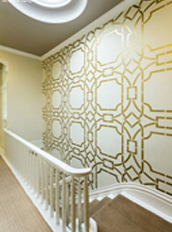
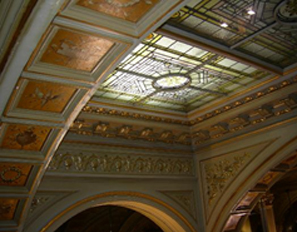
Art Deco elements used to make posters; Wall mural; ceiling design
Dutch artistic movement, founded in 1917 De Stijl was characterized by primary colours, only squares and rectangles, only straight and horizontal or vertical lines combined with a strong asymmetricality. It was also the name of a journal at that time.
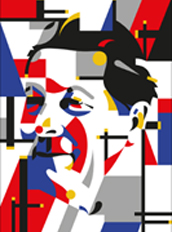
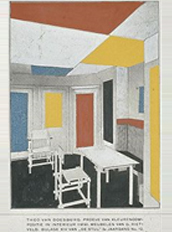
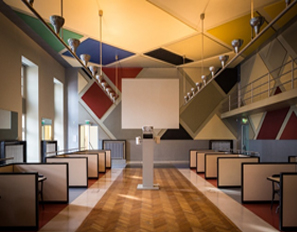
Poster made in De Stijl Colours; Aubette dance hall in Strasbourg; Van Doesburg and Rietveld interior
After evolution from and rebellion against modernist ideas, Postmodern designs often interrogated authority, tossed ideas on their heads, and approached all that came before with scepticism and irony. In the history of graphic design, this movement is often associated with others such as conceptualism and pop art. Monotony often leads people to break out of zones and create new ones. This is opposite of Modernism where straight lines were used and bright colours were avoided.
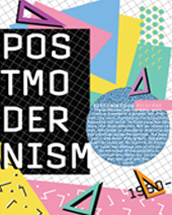
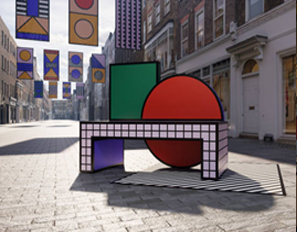
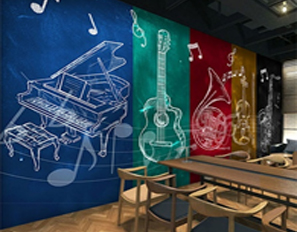
Poster made during Post Modern era; Banners inspired by Post Modernism, Colours and art adding life to the space can be seen through this example.
In the contemporary digital era which we live in, one cannot imagine the world without computers and digital software. In the late 20th century, digital tools took the pencils and paintbrushes from our hands and provided new, revolutionary ways of creating and distributing graphic designs. The mass-adoption of home computers is a technological advancement comparable to the invention of the printing press, ushering in a new age for mass communication and granting access to esoteric art styles and digital software for new methods of creating art Photoshop, for example, launched in 1990, as a graphics editing platform that anyone could use to build professional-grade designs. Other software was also developed eventually to catch up with the needs and requirements of the designers.
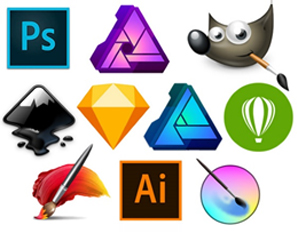
Various graphic design software Logo
Graphic design has been around for quite some time but as we view it today in the world of business it's only been alive for the last hundred years or so. Over those hundred years, graphic design has permitted the space of business and consumerism grabbing our attention, sparking our interests, or sometimes blending seamlessly into our surroundings. It's all around us; unless you are looking for it, you may or may not realize how often it shows up in your daily life. Most likely we can't even begin to imagine where the graphic design will take us in the future- after all, do you think the people printing words onto paper in the first paper mill could have imagined designing the digital banner ads, web pages, branded logos as we know it today?
After going through all these points, I hope you must by now, have a trail of events which takes you back to the history of graphics in interiors and lets you connect to the present-day designs. If you enjoyed this blog-post and found it informative, share it with your friends! Do give us your valuable feedback.
Disclaimer : This blog is for informational purposes only and we have relied upon various resources for compiling the content, data and visuals contained in it.